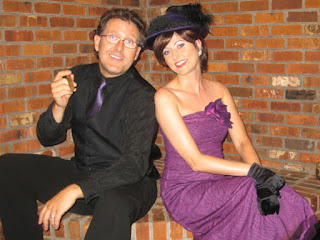 |
| Oak Alley Plantations Live Oak Tree Allee,: View from the Mississippi River |
A SOUPCON OF HISTORY
If those ancient oaks could speak what would they say? "Planted in the 1700s by an unknown settler, the double row of 28 evenly spaced trees were there at Oak Alley Plantation, long before the majestic, present house was built." The awesome Allee or tree avenue invites visitors to Oak Alley Plantation with a sweeping panorama that leads to the mansion creating a stunning vista from the direction of the Mississippi River. The site is located in the community of Vacherie, St. James Parrish, Louisiana on the west bank of the Mississippi River.
THE BON SEJOUR PLANTATION
The Bon Sejour (Good Visit) Plantation as Oak Alley was originally named, was established to grow sugar cane, by the pioneer French entrepreneur, Valcour Aime, who purchased the land in 1830. The history of Oak Alley Plantation is an American romantic epic as equal in importance as Downton Abbey. It is surprising, to me, that no film producer has seen the potential to make Oak Alley's eventful history into a television series. Instead, Bon Sejour has been deemed worthy enough to be the location for numerous productions filmed in part or entirely on location; including Primary Colors, NightRider, Hush, Hush, Sweet Charlotte, Days of our Lives, and others.
 |
| Bon Sejour Living Room where Celina Enertained |
In the halcyon days of Bon Sejour Monsieur Valcour Aime was one of the wealthiest men in the South and reigned in society as the "King of Sugar." He must have enjoyed the fruits of his labor so much that he wanted to downsize and in 1836, Valcour exchanged this piece of property with his brother-in-law, Jacques Telesphore Roman for a property owned by Roman. Thus begins another phase in the management of the land and the dream of an antebellum mansion.The impressive maison that Jacques built, entirely with enslaved labor, was completed in 1839. One interesting story involves the slave, named Antoine. who is listed in the estate's records as gardener, expert grafter of pecan trees." Antoine was a master of grafting and perfected a pecan variety that won a prize at the 1876 Centennial Exposition in Philadelphia. The trees may still be found throughout southern Louisiana, where the pecan was once a cash crop.
A ROMANTIC ENTICEMENT
Jacques, had become, like Aime, a wealthy sugar cane planter, but he had a good reason to erect the mansion, and like a Romance Novel, the story was motivated by Love. At this time his young socialite bride, Marie Therese Josephine 'Celina' Pilie Roman, was enjoying the privileges of French New Orlean's high society balls and entertainments. It was a daunting task but Jacques wanted to entice Celina away from the allure and pleasures of New Orleans' city life to live on the plantation where she could indulge in her social commitments and entertain friends and family in the grand style that she was accustomed to. Jacques had the tenacity of persuasion succeeded in this endeavor by providing Celina with an elegant mansion
 |
| Dining Room's Lyre Fly Swatter |
Sadly, when Jacques Roman died, in 1848, Celina did not have a skill for managing a sugar plantation and her heavy spending nearly bankrupt the estate. In 1859, her son Henri, took control to turn things around but in 1866 the crisis of mounting debt, brought his uncle, Valcour Aime to the rescue and with Jacques' sisters, the plantation was put up for auction and it was sold to John Armstrong.
 |
| The Master Bedroom with Regal Accoutrements |
As with the plight of so many Mississippi mansions, successive owners could not afford the cost of upkeep and by the 1920s, Bon Sejour mansion had fallen into the dust of history, and magnificent antebellum mansion unrecognizable. Then in 1925 along came Andrew Stewart, another romantic, who bought the mansion as a gift to his wife, Josephine. She had a far sighted vision and recognized the mansion's historical significance and began an extensive restoration and modernization of the house.
OAK ALLEY TODAY
The Stewarts were the last owners to live in in the residence. When Josephine Stewart died she left the historic house and grounds to the Oak Alley Foundation, which opened in 1972 to the public as a tourist attraction and site for corporate events, weddings and private parties. The property was designated a National Historic Landmark for its architecture and landscaping, and for the agricultural innovation of grafting pecan tress, performed here in 1846-47 by Antoine, the enslaved gardener. If you want to experience Southern hospitality the estate's overnight cottages are available for rental. For culinary indulgences there is a cafe/ice cream parlor and a restaurant recognized for its creole/cajun cuisine. In addition to films made at Oak Alley, there have also been a number of commercials, fashion location shoots and magazine articles which have appeared in almost every category of media coverage.
It is also interesting to note that the 300 year old Virginia Live Oak trees on the Alley were inducted into the Live Oak Society in 1905 and each tree was registered and given a name.
For further information visit www.OakAlleyPlantation.com or call 1-800-44ALLEY.
Ta Ta darlings!!! Fan is mail always welcome, please send your comments to POLLY at pollytalknyc@gmail.com. Visit Polly's Blogs at www.pollytalk.com on fashion, visionary men, women determined to succeed and poetry.













